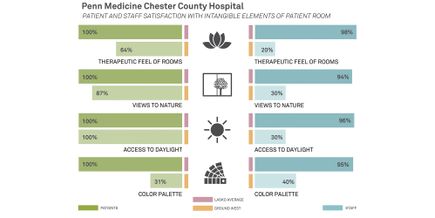Post-Occupancy Evaluation Published for Penn Medicine Lancaster General Health’s Ann B. Barshinger Cancer Institute
Share

Ballinger recently published a post-occupancy evaluation (POE) of the Ann B. Barshinger Cancer Institute at Penn Medicine’s Lancaster General Health. Ballinger conducts POE’s to assess and monitor how buildings are being used. This data informs how future designs can best foster healing and optimize the healthcare experience for patients, families, and caregivers. The research team was led by Louis A. Meilink, Jr. AIA, FACHA, ACHE and Amelia Floresta AIA, LEED AP.
The objective of the POE was to understand which planning and design intentions have been most successfully realized, where user adaptations have been made, and the reasons for change. The team began by gathering both qualitative and quantitative data through an on-line survey to patients and staff, on-site interviews with staff, and on-site observation. These varied collection points allowed the evaluation team to triangulate issues that permeate all groups. The data was then evaluated using three categories: the overall building design and the perception of its spaces, how shifts in operations and procedure have affected staff culture, and patient experience.
The results suggest that the design was successful in fulfilling Lancaster General Health’s vision of providing an extraordinary experience every time. The iconic and integrated nature of the building has increased the hospital’s ability to attract and retain talented physicians and caregivers. Patients reported spending a significant amount of time utilizing the building amenities, which can be attributed, in part, to the presence of nature throughout these areas. The clinical layout was designed to provide a quiet and calming atmosphere. By separating the “on-stage” clinical environment from “off-stage,” staff circulation, noise, traffic, and disruption were reduced. Decentralization supply stations reduced walking distances for staff and increased their time with patients. Overall, respondents found these planning strategies effective in improving the healthcare experience.
View the POE here.



